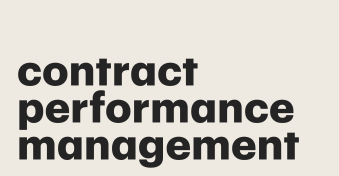In 2015, the Michigan Court of Appeals had before it a case1 where parties interpreted a force majeure clause differently in the context of their take-or-pay (TOP) contract.
The plaintiff, a Japanese multinational electronics manufacturer, stated that force majeure events were an excuse from contractual obligations.
The company was unwilling to pay the seller, Hemlock Semiconductor LLC, for the agreed amount of polysilicon used to produce solar panels.
After examining the take-or-pay contract language and concluding the specific events of the case fell short of the contract’s force majeure clause2, the court upheld the original terms.
The buyer was liable to pay the full contract price.
Courts often take the seller’s side in cases of take or pay contracts. But why?
This article will discuss the nature of take or pay as well as related risks and benefits.
You will discover handy templates and digital tools that you can use to easily create and manage business contracts.
Key takeaways
- Take-or-pay provisions in contracts balance the risks between buyers and sellers. They endeavor to keep both parties safe from market fluctuations or disrupted supply chains.
- Take-or-pay contracts are crucial in the energy and manufacturing sectors of the global economy. The agreements help suppliers build stable, long-term relations with clients.
- Force majeure events may legally allow a buyer to modify contractual obligations and renegotiate a payment — with the operative word here being “may.”
- Digital solutions, such as contract management software and the use of downloadable templates and e-signatures, simplify contract oversight.
What is a take-or-pay contract
You may have already guessed the meaning of a take-or-pay (TOP) contract just on the surface language.
This contract requires a buyer to either accept a minimum quantity of goods or services — or pay a penalty for non-performance.
That might seem like putting too much burden on the buyer while taking liability off of a seller’s shoulders.
In reality, a take-or-pay provision distributes risk between two parties, facilitating trade and lowering transaction costs.
Why take-or-pay contracts are used
In mining, manufacturing, and energy sectors, investments are massive and upfront, and contracts for sellers are like bridges over turbulent rivers.
Take-or-pay contracts help guarantee stable revenue streams and justify million-dollar injections from the start.
TOP agreements are part of strategic planning.
Parties involved create and sign these contracts to reinforce their business transactions and mitigate potential risks.
Even in times of market uncertainties, buyers can evade shortages and price volatility, and sellers can stay financially solid.
Moreover, take-or-pay contracts help companies catch investors’ attention.
When a company shows its planning several steps ahead and is pulling in solid revenue, lenders and investors feel more comfortable.
What are the risks involved in take-or-pay contracts
TOP contracts are usually drafted and signed for the long term, and parties are unlikely to fully escape related risks.
Various force majeure events, which we’ll detail below, can disrupt supply chains and the worldwide production of energy resources.
Other risks include:
- Non-beneficial terms. As circumstances change, the contract may no longer benefit both parties involved, which may lead to terminating the contract.
- Renegotiations. Parties will seek to renegotiate the original contract terms when those become untenable with time, which speaks to the instability of a take-or-pay provision.
- Tough-to-adjust terms. While take-or-pay contracts may include provisions for renegotiating between parties, that doesn’t necessarily mean both parties will arrive at new, favorable terms for a deal.
Whether creating a new contract between companies or renewing an older one, parties should carefully consider the above risks and include flexible terms during contract negotiations.
Implementing smart tools expedites all transactions while conducting this process — for example, document tracking software provides insights into who interacted with documents, and what changes were made, and using e-signatures speeds up closing all deals when take-or-pay contracts are involved.
Take-or-pay contracts in the energy sector
Producing both renewable and traditional energy sources — natural gas, crude oil, solar energy, and so forth — comes with a huge array of challenges.
The scourge of energy suppliers is substantial overhead costs and market volatility.
Take-or-pay provisions in contracts protect sellers’ revenues and ensure that equity firms receive a stable return on their investments.
The two largest examples are oil and gas industry contracts and supply agreements involving liquefied natural gas, commonly referred to as LNG.
Oil and gas industry
This industry is known for costly and high-risk upstream works — especially when accessing deposits requires drilling deep into frigid places or into the ocean.
The oil spill in the Gulf of Mexico in 2010 is a prominent example of how dangerous such works can be.3
Take-or-pay clauses help sellers by binding buyers to take an agreed amount of energy resources and pay despite unforeseen challenges.
Even if buyers take less oil supplies, they still pay the agreed sum.
Liquefied natural gas (LNG)
Before natural gas can be loaded onto specific ships and transported, it must be cooled to below -160 degrees Celsius and condensed to 1/600th of its volume in liquid form.
When the liquefied natural gas reaches its destination, it is then regasified before it can flow into pipelines.
The process is complex, and take-or-pay contracts provide financial stability for sellers.
Such contracts also mitigate investment risks in LNG infrastructure and encourage market growth.
A real-world take-or-pay contract example
Let’s look closer at the above court case concerning contracts for purchasing polysilicon.
The company that won the case in court, Hemlock Semiconductor, LLC, produced hyper-pure polysilicon used, for example, for creating computer chips (the “brains” of modern electronic devices) or — in the case against Kyocera — for the latter company’s solar panel business.
From 2005 to 2008, the parties signed four long-term contracts obligating the plaintiff to buy a specified quantity of polysilicon annually for ten years, with a take-or-pay clause that required payment for any shortfall in the ordered quantity versus the anticipated annual need.
According to the agreement, Kyocera committed to accept the delivery of a quantity of polysilicon during the length of the duration of the contract — or pay a penalty if they didn’t.
The objective — in the form of a contract worth hundreds of millions of dollars — was to secure a stable supply at a fixed price regardless of market changes or unmet demand.
Unfortunately, the price of polysilicon crashed once the Chinese government decided to get into the solar panel market.
The plaintiff referred to the crash as a force majeure, and Hemlock Semiconductor (HSC) claimed take-or-pay provisions must be upheld.
The court sided with HSC, a very expensive verdict for Kyocera.
How long do take-or-pay contracts typically last
These contracts may last for decades. Some may span a couple of years.
TOP contracts provide both buyers and sellers with a safety net, distributing the risks between them long-term.
This is especially relevant in the energy sector, where upstream works, supply chains, and logistics are complex and expensive.
For example, by signing a long-term contract with suppliers for energy projects, a buyer agrees to unconditional payments over the next 10 or 20 years.
On the other hand, short-term take-or-pay contracts can be signed when a construction company needs a fixed amount of materials for a specific project — for instance, one expected to last a couple years.
Likewise, a utility company might need additional power supply during winter months, leading to a short-term TOP contract with a seller.
What is force majeure in take-or-pay contracts
The role of force majeure in contracts is to leave a legal loophole — but not a guarantee — that allows parties to withdraw from their contractual obligations in case of extraordinary events.
These events can include but are not limited to natural catastrophes, local conflicts, pandemics, or political instability.
Simply put, if a buyer cannot accept shipments of raw materials because a recent Category 5 hurricane wrecked the port terminals, the buyer may have the legal right not to fulfill contractual obligations — which means not having to pay a penalty for being unable to accept the shipment.
TOP contracts define the scope of force majeure and shield parties from unavoidable and money-draining circumstances.
If such events occur, parties are both encouraged and legally allowed to readjust obligations fairly — or move to litigation.
How are take-or-pay disputes handled
With massive investments in the energy sector, each party is motivated to establish reliable, predictable business relationships and have contracts that hold up in court.
With the amount of money on the line, take-or-pay contracts are indeed very enforceable, and disputes are usually resolved by parties deciding to litigate.
As in the case of Hemlock Semiconductor, LLC vs Kyocera Corporation, a cause for court litigation can be the force majeure contract clauses.
The court decides if the nature of such events exempts a buyer from compensating the seller or if the buyer has breached the contract.
Create, share, and manage all your business contracts with PandaDoc
When signing a contract with a new supplier, both parties have to handle massive amounts of legal documents.
The PandaDoc suite of tools can assist in creating, distributing, and managing legal documents.
Easy-to-follow software solutions can help them automate document workflows.
Parties can integrate digital solutions with their existing software to make sure all contractual processes are smooth, efficient, and secure, even in the face of unforeseen events.
With customizable business templates, both buyers’ and sellers’ companies can meet their contractual needs, keeping all contracts integral and up-to-date.
Ready to level up how you handle contracts?
Connect with us any time to schedule a demo and see firsthand how PandaDoc can help transform your contract operations.
At PandaDoc, we value the integrity of our content and use only credible, authoritative sources: legitimate aggregation platforms, official vendor websites, verified reviews, and research, as well as trusted industrial media. We embrace accuracy, trust, and transparency by clearly citing these sources and providing links where applicable, allowing readers to explore the foundation of our insights further.
- FindLaw. KYOCERA CORPORATION v. HEMLOCK SEMICONDUCTOR LLC (2015) Show in the article ↑
- Practical Law. Force Majeure Clauses: Key Issues in Selected Commercial Transactions Show in the article ↑
- The New York Times. Ten Years After Deepwater Horizon, U.S. Is Still Vulnerable to Catastrophic Spills Show in the article ↑


